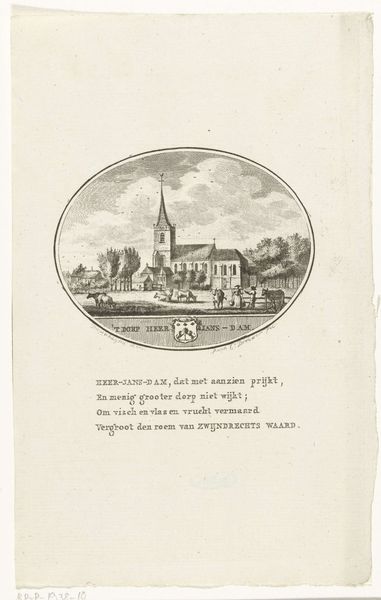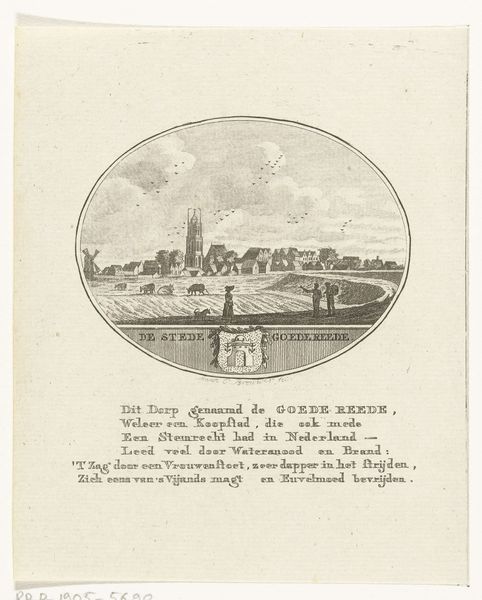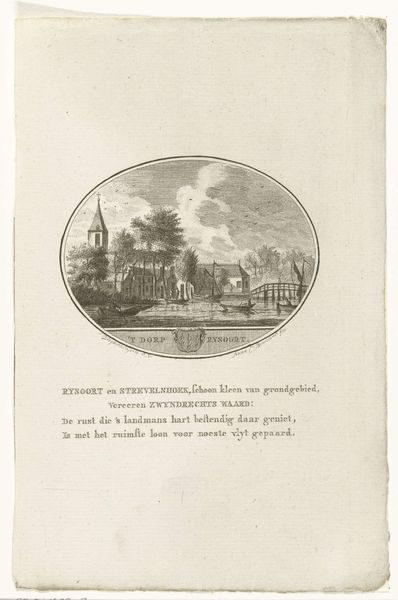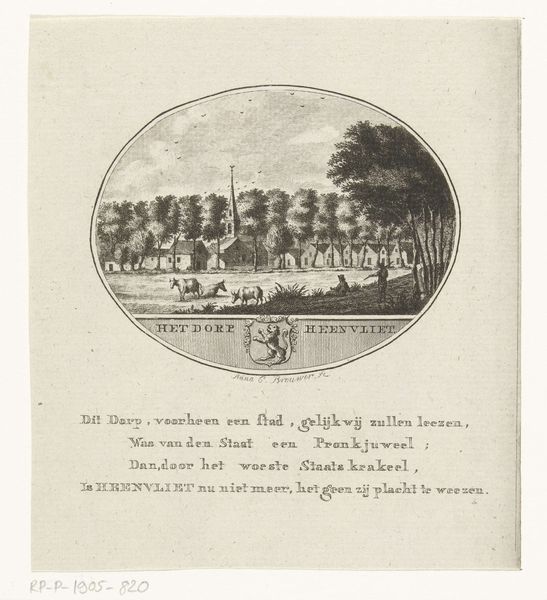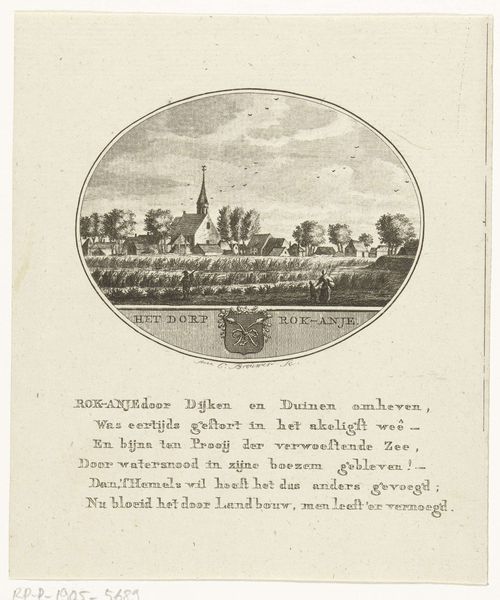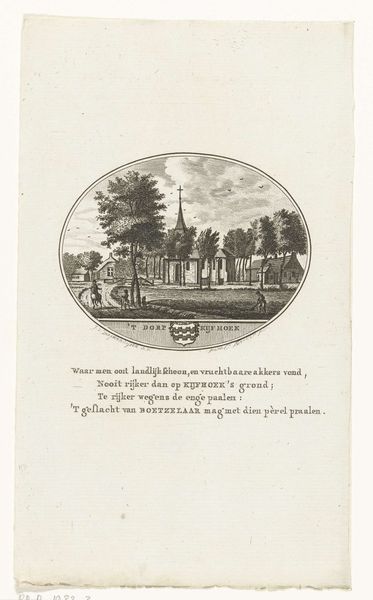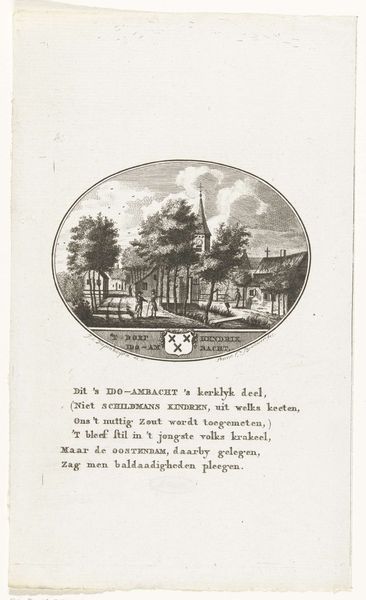
print, engraving
# print
#
old engraving style
#
landscape
#
cityscape
#
engraving
Dimensions: height 220 mm, width 140 mm
Copyright: Rijks Museum: Open Domain
Curator: Welcome. Before us, we have a print titled “Gezicht op het dorp Mijnsheerenland,” created between 1791 and 1793. The work is currently held here at the Rijksmuseum. Editor: Oh, what a charming little vignette! It reminds me of a memory box or one of those vintage lockets you'd find tucked away in an attic, all quaint and nostalgic. There's an innocence here, like a child's drawing. Curator: That sense of innocence, I think, is quite deliberate. The print depicts an idealized view of Mijnsheerenland, showcasing a peaceful village scene centered around the church. Consider the era: The Netherlands was experiencing considerable political and social upheaval, and such images offered an appealing, untroubled vision of the countryside. Editor: Absolutely! I'm drawn to how the landscape feels both precise and dreamy. The artist, Anna Catharina Brouwer, captures the distinct forms and volumes in her style – like the stark, tall spire that punctuates the scene, but it still manages to conjure up this ethereal feel. Is that verse underneath a tribute? Curator: Precisely. It praises the land and prosperity it provides to the Netherlands. We need to see how printmaking played a critical role in disseminating this vision and celebrating Dutch identity through landscape imagery. Editor: I suppose there is something propagandistic here, using charm as its subtle weapon. That spire isn't just decorative – it's anchoring this town, these verses are holding its values. You know? Curator: And don't overlook how prints were accessible. That kind of messaging and access is important when it comes to influencing public opinion. Editor: You’re right, like propaganda on postcards! Still, the artwork’s sweetness feels almost…genuine, almost innocent. I wonder what Anna Catharina Brouwer herself felt as she crafted this image, the pressure to conform, or perhaps a sincere affection for Mijnsheerenland? Curator: Those human details, that interplay between individual agency and broader cultural currents, keep me going! We can only interpret what these pieces tell us. Editor: Indeed. All that social history to create art! Like the village in the artwork, let's reflect a bit more. Curator: It provides a very specific window to what life *might* have been during this time period. Editor: Like a collective hope for a future they were envisioning and trying to build? A pretty powerful feeling, regardless!
Comments
No comments
Be the first to comment and join the conversation on the ultimate creative platform.
